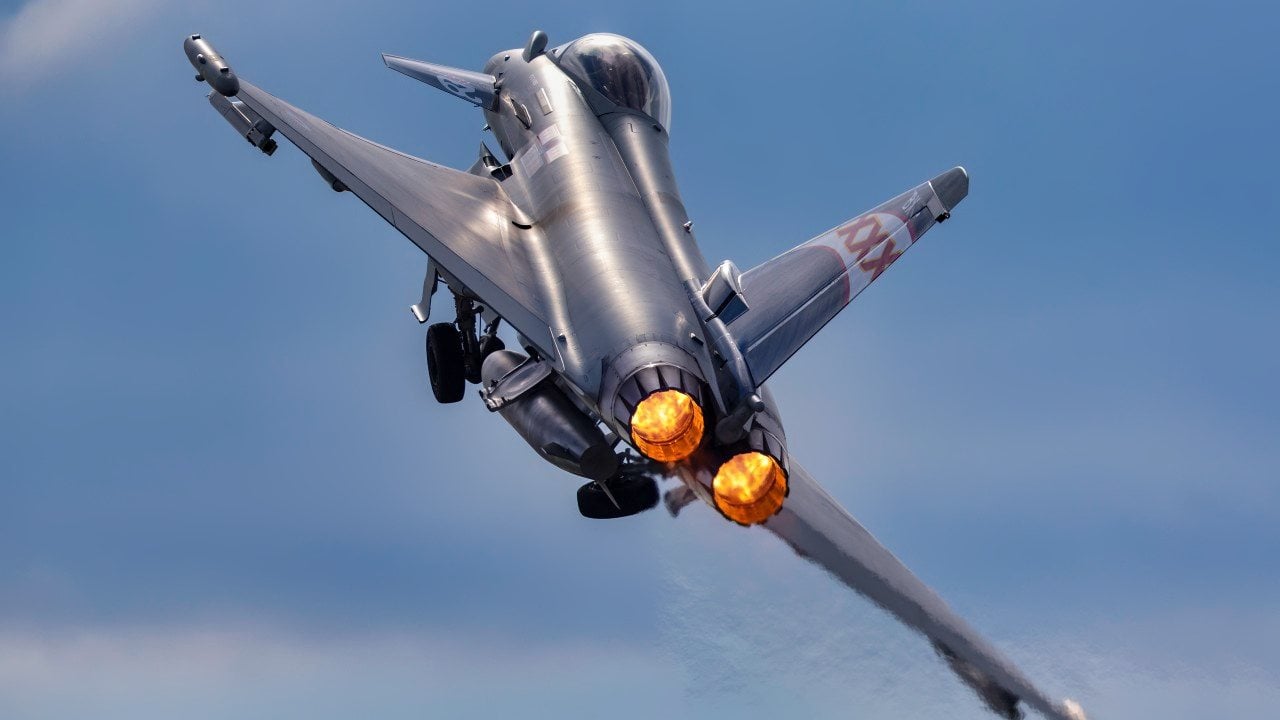The Eurofighter Typhoon Is a Fighter Legend for a Reason
Summary: The Eurofighter Typhoon, a cornerstone of European air defense, celebrates two significant milestones: 20 years of service with the Italian Air Force and 30 years since its maiden flight.
Summary: The Eurofighter Typhoon, a cornerstone of European air defense, celebrates two significant milestones: 20 years of service with the Italian Air Force and 30 years since its maiden flight. The Italian Air Force marked the Typhoon's service anniversary by unveiling a special livery on a two-seater variant that first landed at Grosseto Air Base on March 16, 2004. This month also commemorates the 30th anniversary of the Typhoon's first flight in Bavaria, Germany. Initially developed by the Eurofighter consortium, which includes Germany, Italy, the UK, and later Spain, the Typhoon was conceived to be at the technological forefront with features like canard foreplanes, digital fly-by-wire controls, and composite materials construction. Despite early challenges, including post-Cold War budget concerns, the Typhoon emerged as a cutting-edge fighter jet, serving key roles in multiple air forces and highlighting European defense collaboration.
The Eurofighter Typhoon Is a Powerhought Fighter Jet
The Italian Air Force has operated the Eurofighter Typhoon for two decades, with the first aircraft – a two-seat variant – landing at Grosseto Air Base on March 16, 2004. To mark the occasion, the same two-seater Typhoon received a special livery that was unveiled this week.
"The special colored TF-2000A flew over Grosseto as part of a 5-ship formation during a ceremony held in Grosseto to mark the 20th anniversary since the first landing at the base," TheAviationist.com reported.
Photos of the Eurofighter with its 20th-anniversary paint job have also been shared on X, the social media platform formerly known as Twitter.
30 Years Since Its First Flight
This month also marks the 30th anniversary of the Eurofighter Typhoon's maiden flight, which occurred in Bavaria, Germany, on March 27, 1994. The then-prototype aircraft was flown by DASA chief test pilot Peter Weger.
It almost didn't happen.
Development of the Typhoon began in 1986, with the establishment of the Eurofighter consortium that involved the three countries – Germany, Italy, and the UK – that had worked to develop the Panavia Tornado. Those nations were later joined by Spain, while France had also been an early partner in the European Fighter Aircraft (EFA) before Paris elected to pursue its own program that resulted in the development of the Dassault Rafale.
Early work on the EFA project had actually defined the basic concepts for the future Eurofighter Typhoon, including canard foreplanes, active digital fly-by-wire controls, extensive use of carbon fiber composites and other advanced materials, a hands-on throttle and stick (HOTAS) cockpit, advanced avionics, multi-function cockpit displays and direct voice command input. Many of the technologies had been tested using a full-scale demonstrator, the British Aerospace (BAe) EAP (Experimental Aircraft Programme). Seven prototypes were produced, and the first made its maiden flight in March 1994.
Yet, before the aircraft made its first flight the world had changed significantly. The Cold War had ended, and with the dissolution of the Soviet Union, the need for such an advanced – and more notably expensive – fighter jet was questioned.
There were disagreements over the funding and then the types of equipment that would be integrated into the aircraft. Yet, the differences were resolved and the first production contracts were signed in 1998. The aircraft was subsequently re-designated the Eurofighter 2000 and later renamed Eurofighter Typhoon.
Cutting Edge Eurofighter
The twin-engine Typhoon features a canard-delta wing and an airframe that is constructed mostly from composite materials that are 30 percent lighter than more traditional aircraft materials. Just 15 percent of its surface is metal, making it difficult – albeit not impossible – to detect by radar.

The Eurofighter is powered by twin Eurojet EJ200 engines, which each utilize a single-stage turbine driving a three-stage fan and five-stage compressor with annular combustion with vaporizing burners, can provide 90 kN of thrust – with a maximum speed of Mach 1.8 The engines can log up to 1,200 flying hours before requiring unscheduled maintenance. It enabled cruise at supersonic speeds without afterburning. The Typhoon also employed a deliberately unstable aerodynamic configuration that provided superior maneuverability at subsonic speeds as well as efficient supersonic capability.
It is armed with an internal 27mm Mauser cannon and can carry a variety of ordnance including ASRAAM and AIM-120 AMRAAM air-to-air missiles, as well as Storm Shadow and Brimstone air-to-ground missiles.
The Eurofighter Typhoon is now in service with the UK's Royal Air Force, the German Luftwaffe, the Italian Air Force, and the Spanish Air & Space Force. As of last November, a total of 592 of the advanced aircraft have been produced.
Author Experience and Expertise: Peter Suciu
Peter Suciu is a Michigan-based writer. He has contributed to more than four dozen magazines, newspapers, and websites with over 3,200 published pieces over a twenty-year career in journalism. He regularly writes about military hardware, firearms history, cybersecurity, politics, and international affairs. Peter is also a Contributing Writer for Forbes and Clearance Jobs. You can follow him on Twitter: @PeterSuciu. You can email the author: [email protected].
Image Credit: Shutterstock for all images.
This piece has been updated since publication to correct a dating error.


